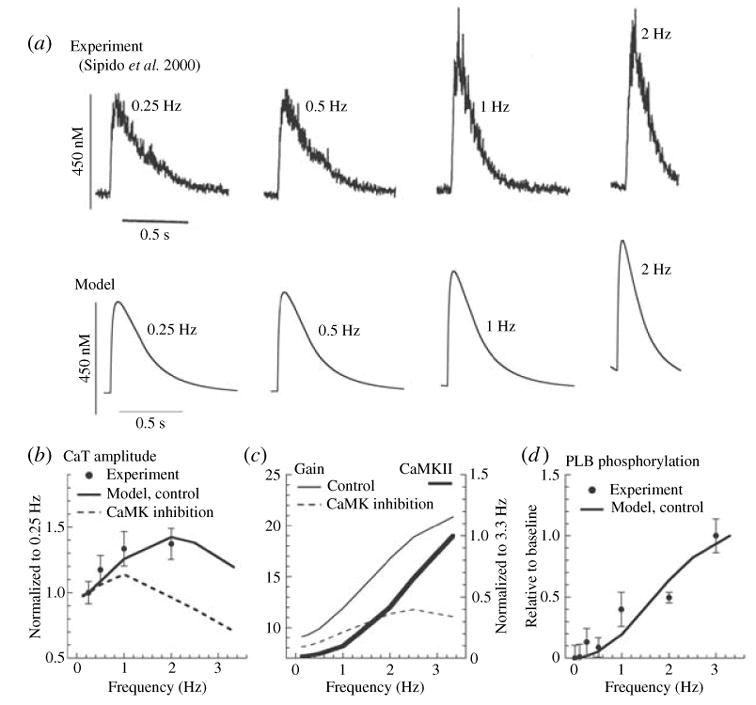Fig. 32.

CaMKII regulation of the Ca2+-transient rate-dependence. (a) Simulated (bottom) and measured (top) steady-state Ca2+ transient (CaT) for 0.25, 0.5, 1, and 2 Hz pacing. (Experimental tracings are adapted from Sipido et al. 2000, with permission.) (b) CaT-frequency relation for experiment (circles), model under control conditions (line), and in presence of CaMKII inhibition (dashed line). (c) Minimal diastolic CaMKII activity (thick line, normalized to 3.3 Hz) and excitation-contraction coupling (ECC) gain. ECC gain=∫A Freldt/∫A FCa(L)dt, where Frel and FCa(L) are fluxes through RyR and ICa(L), respectively, and the integration interval, A, is over one cycle. Gain is shown for control model (thin line) and in presence of CaMKII inhibition (dashed line). (d ) PLB phosphorylation vs. pacing frequency compared with experimental data (Hagemann et al. 2000). (From Hund & Rudy, 2004, with permission.)
